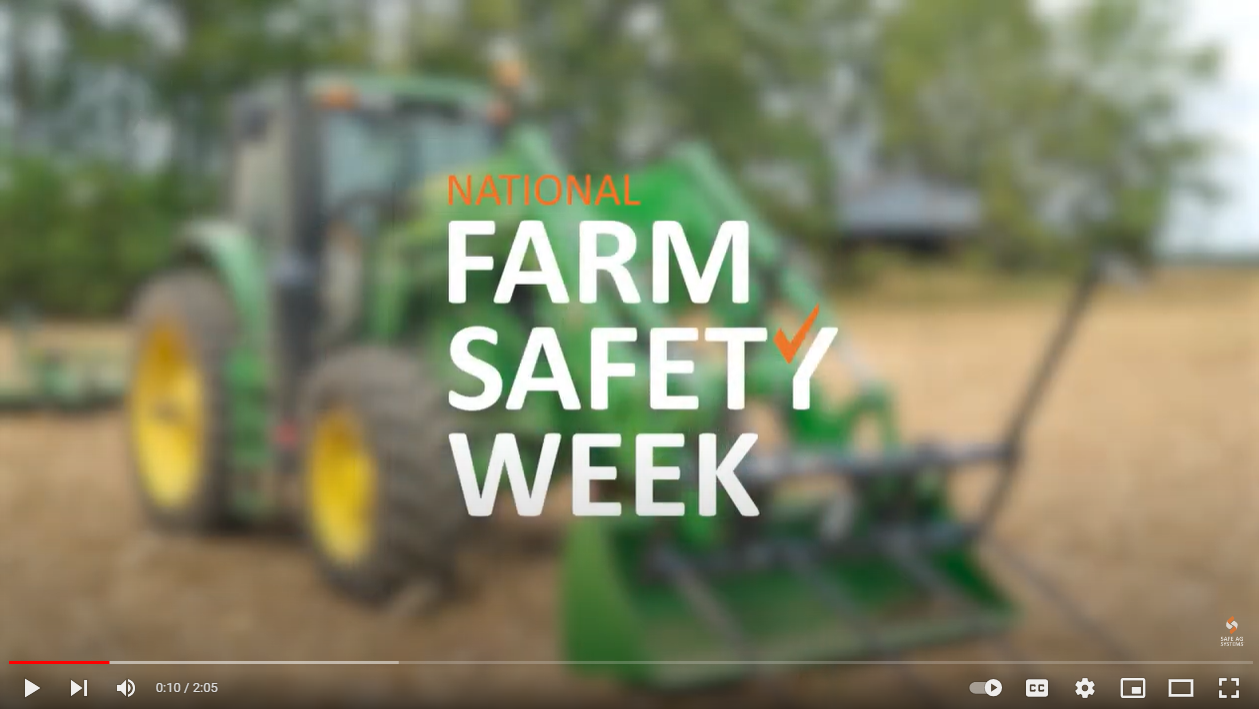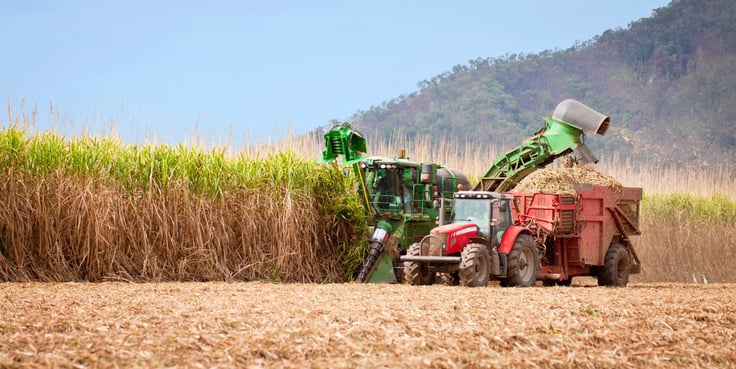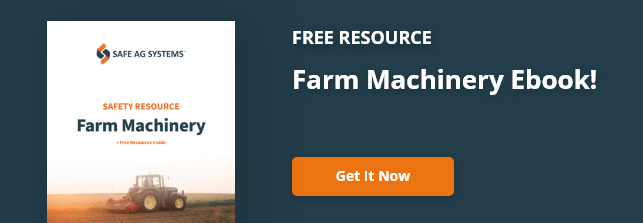The State of Our Industry
Tractors and large farm machinery are icons of the agricultural industry.
As children we idolised them. Large, powerful machines that are brightly coloured. We’d play with our toy versions and pretend to be farmers.
But we can’t play pretend anymore. Agriculture remains one of the most dangerous industries in Australia.
Our wake-up call shouldn’t be the 55 farmers who didn’t make it home in 2022. An increase of 9 more lives compared to 2021.
The leading cause of death this year continues to involve Tractors and farm machinery.
They're no longer toys.
With such alarming numbers, Farmsafe Australia has respectively chosen “Stay On The Safe Side” as the theme for Farm Safety Week 2023. The theme heavily focuses on tractor and machinery safety.
Out of the 55 fatalities, 11 were the result of tractors, 8 from quad bikes and 2 from side-by-sides.
An additional 158 non-fatal on-farm injuries were also reported.
-
Quads - 33
-
Horses - 21
-
Tractors - 17
-
Side by sides - 13
Our Mission for this week, and the year ahead
Pledge to be safer around farm machinery and tractors this #FSW23. We’ve curated a selection of our best farm machinery blogs for you to read and share. They’ll explore the hazards, and common injuries and provide practical tips to try to help keep your workers safe and manage your Work, Health and Safety obligations.
Check out our listing 👇
Common Causes of Tractor Injuries
Tractor rollovers
Did you know there are two types of rollover that tractors are notorious for?
The first is the sideways rollover, the second is the backflip. These types of rollovers tend to happen on raised surfaces and especially on narrow roads due to gravity.
Since a tractor generally relies on centrifugal force balanced with its tipping axis, sideways rollovers often occur due to sharp turns or cornering.
Backflips tend to happen when rear‐axle torque unbalances the tractor. This shift in balance can occur when the tractor wheels are unable to move forward, rapid acceleration or attempt to drive up a slope. These actions may prevent the axle rotation resulting in the tractor lifting its front wheels.
Tractor runover
Runover incidents tend to occur when bystanders get too closer to the front or back of the machinery and the operator is unaware.
However, an operator can also find themselves in harm's way due to an unfortunate trip or fall. Unsafe practices and fatigue causing lack of concentration also add to the risk of a runover, by trying to “save time“ drivers may attempt to start the engine from outside the cab or try to jump off or on a vehicle whilst it is in gear.
PTO entanglement
The problem with tractor Power Take-Off (PTO) shafts is that when unguarded, loose items such as clothing, hair and jewellery can become entangled in the PTO. As a power source for attachments such as post-hole diggers, there are several ways to reduce the risk of amputation, disability, injury and death due to a PTO.
We delve deeper into this on our common causes of tractor injuries blog.
Quadbike rollover protection 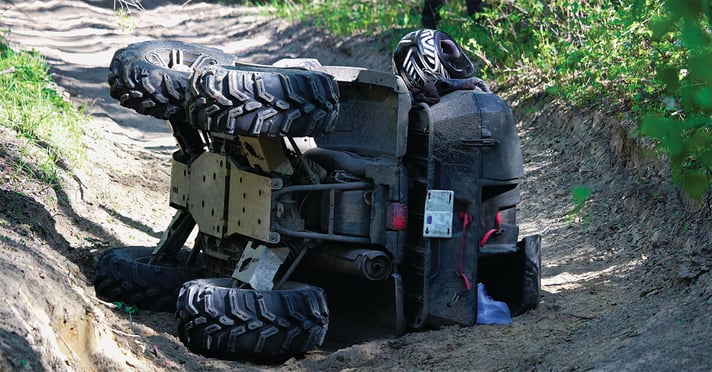
Quad bike rollovers happen, even when being operated ‘carefully’.
It’s estimated six people per day present to the emergency department from injuries sustained on quads, 2 of which are admitted with serious injuries. That’s thousands of injuries a year affecting people’s ability to work and live a normal life.
Similar to tractors they’re unbalanced and heavy. Uneven terrain or high speeds can cause these vehicles to roll over. If they fall onto the rider there is a risk of being pinned under it or death.
The Consumer Goods (Quad Bikes) Safety Standard 2019 came into effect on 11 October 2019. It implemented a set of requirements for all new, imported and second-hand quadbikes to meet.
See what you need to know for quad bike rollover protection and regulations in our blog.
Looking out for little farmers
.jpg?width=712&height=476&name=pexels-stephen-andrews-9305056%20(1).jpg) Children are naturally curious, so it's important to keep them away from danger.
Children are naturally curious, so it's important to keep them away from danger.
This could be in the form of machinery and equipment, livestock or bodies of water. Whilst children learn about farm safety as they develop and grow, they also mimic the behaviour of those around them. If you uphold the importance of best practice when it comes to safety, hopefully they will too.
Where to start?
Addressing child safety on your farm can include the usual steps of a risk assessment. Talk to your workers, consult them about the day-to-day activity on-farm, they might have a different perspective of what poses a danger to children.
Then identify the hazards, assess the risk and implement the controls to keep your children safe.
When it comes to your machinery, children should never ride in the back of utes, attachments or in tractors without restraints.
When introducing your children to farm vehicles, like motorbikes and quad bikes, it's important that they understand the dangers of speeding and uneven terrain.
Stick to the manufacturer's recommendations of age, height and weight, and ensure children have a properly fitted helmet
See further information on how to keep children safe on your farm + FREE safety resource.
Don’t get screwed by auger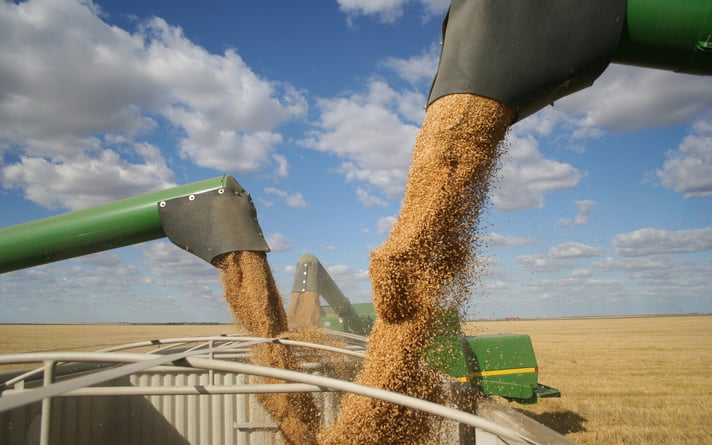
Augers are widely known for being dangerous. The rapidly rotating metal spiral flight mechanism can throw a finger or hand about 1.5 metres away before the injured person has time to react!
It is estimated that around 60 serious injuries involve farm augers each year, most of those injuries are crush injuries or amputation of fingers, hands, arms and feet.
How to keep safe while operating an auger:
-
Ensure all guards are in place before augers are operated, especially after maintenance
-
Guard auger drive trains (belts, pulleys, drive shafts) and the rotating screw fitting
-
Locate mobile augers on firm, preferably flat ground, and operate at a shallow angle less than 45 degrees to prevent overbalancing
-
Lower and empty mobile augers when being transported
-
Ensure the emergency stop control is next to the auger inlet
See the rest of our auger recommendations within our blog.
Managing Fatigue on Farm
Fatigue is one of the most common hazards on a farm, and most underrated risk for everyone.
It’s more than just feeling a bit tired. Fatigue is that overall feeling of tiredness or lack of energy. It interferes with normal daily activities and functioning, impacts on alertness and slows reaction times.
To be operating at a safe level, research tell us the average person needs AT LEAST 6 hours of sleep a night, ideally 7 – 7.5hrs of uninterrupted, good quality sleep, depending on the individual.
We know peak seasons increase risks when it comes to fatigue. Make sure you assess and manage that risk. Consider increasing the rotation of tasks, especially during overnight shifts. Encourage your workers to get some rest, and keep everyone hydrated as it’s generally pretty hot work.
Visit our blog for further hints and tips on how to manage fatigue in agriculture.
Disclaimer: Content on this website may be of relevance to users outside of Australia, but content links and examples are specific to Australia. Please check with your local authority for your country and industry requirements.






